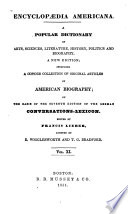 | Francis Lieber, Edward Wigglesworth, Henry Vethake - Encyclopedias and dictionaries - 1851 - 624 pages
...less, place the greater of these two terms on the left, and the less in the middle ; and in both cases, multiply the second and third terms together, and divide the product by the first term for the answer, which will always be of the same denomination as the third term. — Note 1. If... | |
 | George Roberts Perkins - Arithmetic - 1851 - 356 pages
...written the three terms of the proportion, or, as usually expressed, having stated the question, then multiply the second and third terms together, and divide the product by thejlrst term. NOTE.—Since there is a ratio between the first and second terms, they mast be reduced... | |
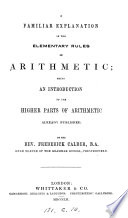 | rev. Frederick Calder - 1852 - 368 pages
...and if the third term consist of several denominations, reduce it to the lowest name mentioned. Then multiply the second and third terms together, and...the product by the first: the quotient will be the answer or fourth term, expressed in the same denomination as that in which the third term was left.... | |
 | Joseph Bateman - Excise tax - 1852 - 376 pages
...cases, whether the question relates to whole or mixcd numbers or to decimals, and is as follows: — Multiply the second and third terms together, and divide the product by the first ; the quoticnt is the answer.* * This rule was formerly ealled the " Rule of Thrce," beeause, in ench of... | |
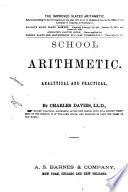 | Charles Davies - 1852 - 344 pages
...number named in connection with it for the first term, and the remaining number for the second term. II. Multiply the second and third terms together, and divide the product by the first term : Or, Multiply the third term by the ratio of the first and second. NOTES. — 1. If the first... | |
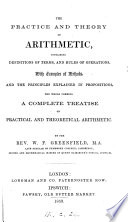 | William Frederick Greenfield - 1853 - 228 pages
...the first and second, or the first and third, terms have any common divisor, divide them hy it. 6. Multiply the second and third terms together, and divide the product by the first. 7. The quotient will be the answer required, in the denomination to which the third term was reJuced,... | |
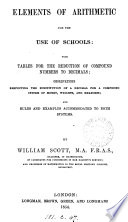 | William Scott - Arithmetic - 1854 - 232 pages
...less the consequent : then, having reduced the antecedent and consequent to the same denomination, multiply the second and third terms together and divide the product by the first. The result is the fourth term of the proportion, or the answer to the question. When the conditions of... | |
 | Thomas Tucker Smiley - Arithmetic - 1854 - 192 pages
...second terms to the same denomination, and to the lowest denomination mentioned in either of them. 3. Multiply the second and third terms together, and divide the product by the first term; the result will be he fourth term, or answer, in the same denomination to which the third term... | |
 | John Budge - Mining engineering - 1854 - 248 pages
...SHROUD-LAID* ROPE. RULE — State the question as in direct proportion, square the first and third terms, multiply the second and third terms together, and divide the product by the first. EXAMPLE. How many standard yarns, or threads, are there in a 14-inch capstan rope ? 9)3920 Answer 435... | |
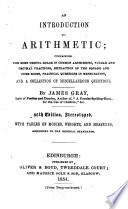 | James Gray - Arithmetic - 1854 - 120 pages
...which stand below each other, which will reduce them to three ; then multiply the second by the third, and divide the Product by the first, the Quotient will be the answer in the same name with the third term. PKOOF. Invert the question. 1. If 100?. in 12 months gain... | |
| |